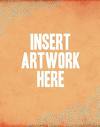 Reading Time: 6 minutes
Reading Time: 6 minutes
I thought this post was necessary as I have had at least two clients this week come to me with the idea of ditching some of their text content in favor of a more image-based site. The problem is that it isn’t just this week, the insanity of the holidays or even the phase of the moon. I often hear clients mention that they would like to offer a more “user-friendly” site with many more images instead of provided the recommended amount of body copy, preferably 250+ on the homepage and 150+ on internal pages.
Usually once I have heard this remark to drop the copy, and after my blood pressure has come back down to normal, I reply with the comment, “sure, if a picture sells your product better that information on how your product or service is a solution for a site visitor then lets do it”. Ok, so maybe I don’t say that, but it would be pretty relevant for me to do so. The fact of the matter is, the site visitors viewing these organic landing pages are arriving due to your current ranking, something likely more attributed to your content more so than your images.
As the world turns and the average searchers attention span continues to dwindle it is no wonder that companies are worried about spawning interest in site visitors and avoiding an increase in bounce rates. This is what I consider “fighting the good fight”. After all, in this situation you are receiving traffic, apparently qualified traffic from organic search. Now you have to assess how they digest your content.
Within effective SEO, you will also consider usability… and then optimize that too! I could make this post ridiculously long with an exhaustive look at eye-tracking, call to action placement, A/B testing, etc. but we will keep it simple. Yes, us SEO’s do not want to give our text content up, but images are absolutely fine. In fact, image search has only become more important with the advancements in universal search results. For any webmaster or company begging to abandon their copy, you must create a perfect mix of both copy and images to maximize the conversion potential of targeted site pages.
To make sure both the SEO and the image-lover are happy the following is an example of how to make an effective text and image duo.
-Provide at least one paragraph of copy featuring the most important keywords relevant to the site page. Find or create another keyword relevant page on site and link to the page internally. A link should be placed within the first paragraph to this page with anchor text which is keyword relevant to the pages overall theme as well as to the adjacent images file-name and alternative tag.
-Include an image, file-named relevant to the keyword targets, ALT-tagged similarly as well.
-Additional body copy should be placed to reach an advised amount of internal page body copy. Continue to reinforce your keyword theme. This only helps the ability for the image to rank within image search as the image is surrounded with keyword relevant copy and link text.
-Repeat the alternation of copy and images. The important concept for SEO is to surround images with relevant keyword-rich body copy, practice proper image SEO best practices, but to also provide images throughout the copy to visitors to visually inform them of your products or services as well and entice interest.
-Key takeaways here are that you don’t want to have all your images at the top of the page as this may push content below the fold away from content hungry visitors and copy further away from crawling search engines. You also don’t want your images at the bottom of the page. This does not allow the images to gain the SEO value of being surrounding by keyword relevant copy and internal links, and if site users went through all the copy and are now down to the images, what was the point of including the images anyway?
Images and copy can live together, and a perfect mix work better than no images at all. However, be sure that you don’t sacrifice copy for images, chances are your visitors will be left yearning for a textual explanation of what you were visually trying to say.
I thought this post was necessary as I have had at least two clients this week come to me with the idea of ditching some of their text content in favor of a more image-based site. The problem is that it isn’t just this week, the insanity of the holidays or even the phase of the moon. I often hear clients mention that they would like to offer a more “user-friendly” site with many more images instead of providing the recommended amount of body copy, preferably 250+ on the homepage and 150+ on internal pages.
Usually once I have heard this remark to drop the copy, and after my blood pressure has come back down to normal, I reply with the comment, “sure, if a picture sells your product better that information on how your product or service is a solution for a site visitor then lets do it”. Ok, so maybe I don’t say that, but it would be pretty relevant for me to do so. The fact of the matter is, the site visitors viewing these organic landing pages are arriving due to your current ranking, something likely more attributed to your content more so than your images.
As the world turns and the average searchers attention span continues to dwindle it is no wonder that companies are worried about spawning interest in site visitors and avoiding an increase in bounce rates. This is what I consider “fighting the good fight”. After all, in this situation you are receiving traffic, apparently qualified traffic from organic search. Now you have to assess how they digest your content.
Within
effective SEO, you will also consider usability… and then optimize that too! I could make this post ridiculously long with an exhaustive look at eye-tracking, call to action placement, A/B testing, etc. but we will keep it simple. Yes, us SEO’s do not want to give our text content up, but images are absolutely fine. In fact, image search has only become more important with the advancements in universal search results. For any webmaster or company begging to abandon their copy, you must create a perfect mix of both copy and images to maximize the conversion potential of targeted site pages.

To make sure both the SEO and the image-lover are happy the following is an example of how to make an effective text and image duo.
-Provide at least one paragraph of copy featuring the most important keywords relevant to the site page. Find or create another keyword relevant page on site and link to the page internally. A link should be placed within the first paragraph to this page with anchor text which is keyword relevant to the pages overall theme as well as to the adjacent images file-name and alternative tag.
-Include an image, file-named relevant to the keyword targets, ALT-tagged similarly as well.
-Additional body copy should be placed to reach an advised amount of internal page body copy. Continue to reinforce your keyword theme. This only helps the ability for the image to rank within image search as the image is surrounded with keyword relevant copy and link text.
-Repeat the alternation of copy and images. The important concept for SEO is to surround images with relevant keyword-rich body copy, practice proper image SEO best practices, but to also provide images throughout the copy to visitors to visually inform them of your products or services as well and entice interest.
-Key takeaways here are that you don’t want to have all your images at the top of the page as this may push content below the fold away from content hungry visitors and copy further away from crawling search engines. You also don’t want your images at the bottom of the page. This does not allow the images to gain the SEO value of being surrounding by keyword relevant copy and internal links, and if site users went through all the copy and are now down to the images, what was the point of including the images anyway?
Images and copy can live together, and a perfect mix work better than no images at all. However, be sure that you don’t sacrifice copy for images, chances are your visitors will be left yearning for a textual explanation of what you were visually trying to say.
Still looking for something more? Explore our SEO services and start with an SEO Audit. If you’re about to do a redesign be sure to read about our web design and development services or just get in touch with us!
At Vizion Interactive, we have the expertise, experience, and enthusiasm to get results and keep clients happy! Learn more about how our SEO Audits, Local Listing Management, Website Redesign Consulting, and B2B digital marketing services can increase sales and boost your ROI. But don’t just take our word for it, check out what our clients have to say, along with our case studies.
 Reading Time: 6 minutes
Reading Time: 6 minutes




